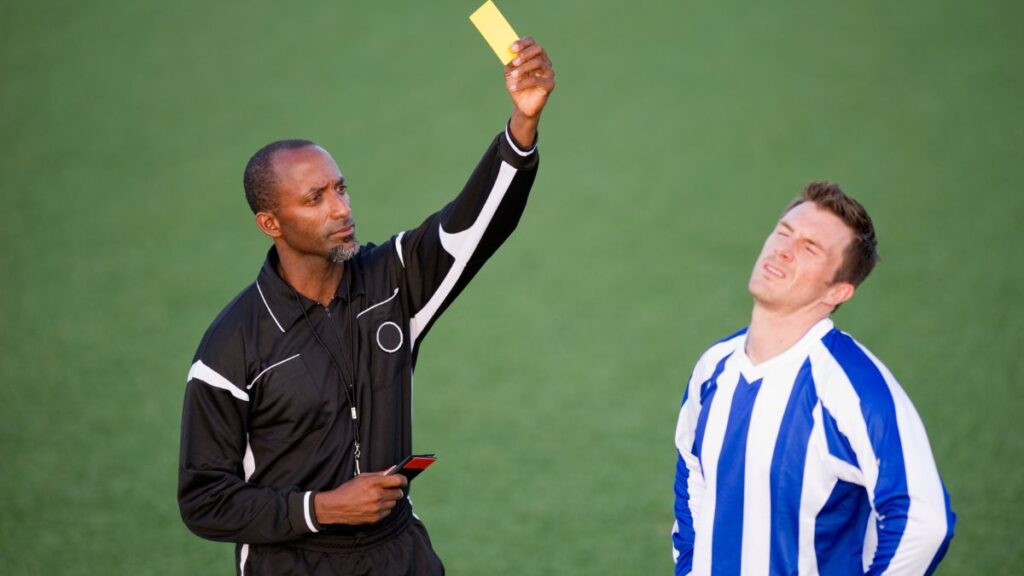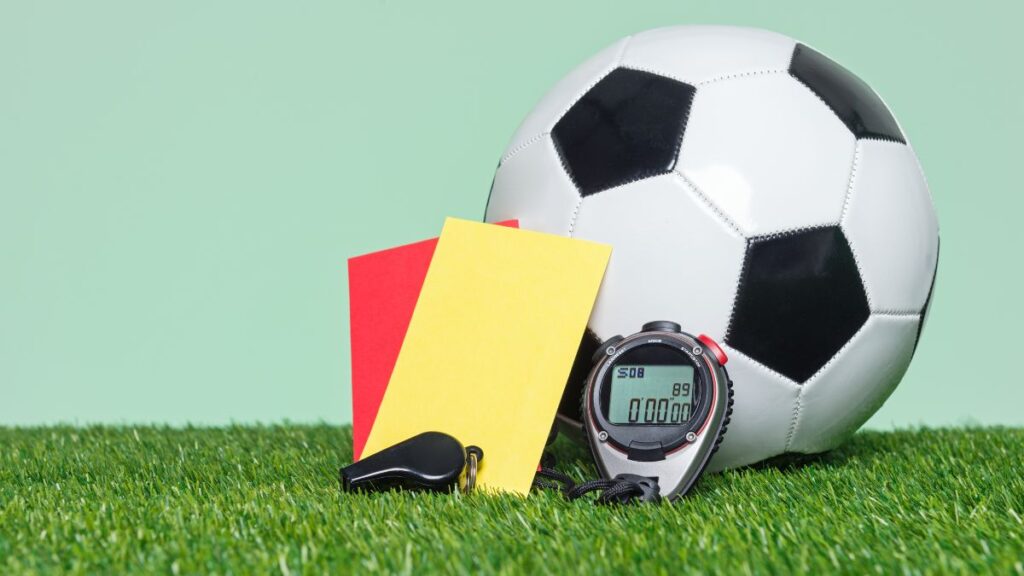Boost your betting experience and get up to $200 bonus right now!
The week from October 13 to 19 in football mirrored the ongoing drama VAR (Video Assistant Referee) injects into football at every level. Across the Premier League, La Liga, and competition stages like UEFA Champions League, crucial refereeing decisions under review spotlighted the constant tension between technology’s promise and the game’s human nature. As controversial calls resurfaced, fans and managers confronted raw emotions—victory snatched, points cost, and prestige questioned. These moments underscore the critical path the sport is on: refining VAR not to dominate matches but to support fairness and fluidity. The Premier League, in particular, wrestles with how recent fixes and next-gen technology, like semi-automated offside aids, can enhance accuracy without draining passion from football’s electric rhythm. Football’s heartbeat—the clash of titans, nail-biting finishes, and heroic exploits —cannot be lost in prolonged analysis or botched interpretations. Every call, every check, every change to VAR regulations is a chapter in football’s evolving narrative, where legends are built and myths challenged amidst an atmosphere charged with hope, fury, and inevitability.

VAR’s Accuracy Surge in Premier League: Analytics and Real Match Impact
The Premier League’s latest season has witnessed a tangible shift in VAR effectiveness, with a noticeable reduction in errors and increased consistency in decisions. A dive into the numbers reveals a drop from 20 VAR-related errors last year to just 13 up to this point. This decline might seem incremental but carries immense weight when championship points and managerial tenures hang in the balance. The Key Match Incidents (KMI) panel’s evaluation of the first 23 rounds discovered four mistaken VAR interventions and nine notable misses across nearly 240 contested matches. This equates to a roughly 96.4% accuracy rate — a subtle but meaningful improvement over last season’s 95.7%.
Such statistics reinforce the growing professionalism in officiating, spurred on by the International Football Association Board’s (IFAB) directives and the Premier League’s own initiatives to reduce controversy. Tony Scholes, the league’s chief football officer, pointed out that a single VAR oversight can rewrite a club’s destiny. Imagine a moment in a bruising clash like Newcastle versus Bournemouth, where a late goal ruled out due to an alleged handball sparked uproar, only for the intervention to be later deemed incorrect by Howard Webb, PGMOL’s chief. These are not just numbers—they are moments of glory or despair for players and fans alike.
- Reduction of VAR errors from 20 to 13 compared to the same period last season.
- 70 total VAR interventions over 239 matches, about one every three games.
- Accuracy rise to 96.4% from 95.7% the previous year.
- Key Match Incidents panel identified four erroneous decisions and nine missed calls.
This statistical overview does not fully capture the sheer drama these calls embody during live matches. While VAR’s role is not to erase the game’s intensity, the Premier League’s leadership aims to reduce frustration by tightening protocols and making officials’ judgment calls more consistent and transparent.
Case-by-case VAR Errors: Lessons from Stunning Premier League Controversies
Several VAR decisions during the week spotlight just how razor-thin the margin between right and wrong remains, even with technology on board. Consider the East London battle between West Ham and Manchester United. A penalty awarded to West Ham sparked fiery discussions, mainly since it directly preceded a high-profile managerial shakeup with Erik ten Hag’s dismissal. This penalty, chalked up to an alleged foul on Danny Ings by de Ligt, was later flagged by refereeing chief Howard Webb as an incorrect award. The stakes illustrate VAR’s explosive potential—altering not only a game’s scoreline but a club’s strategy and leadership.
Similarly, the controversial red card for Brentford’s Christian Noorgard in a challenge against Everton’s goalkeeper Jordan Pickford was overturned on appeal, highlighting the system’s fallibility. Then there’s the deep offside decision in Nottingham Forest v Southampton, where Nikola Milenkovic’s header was wrongly chalked off, stirring debates on the fluid interpretation of offside laws.
- Bournemouth vs Newcastle: Overturned late goal due to disputed handball.
- West Ham vs Man Utd: Controversial penalty leading to managerial sacking.
- Brentford vs Everton: Red card revoked after VAR decision scrutiny.
- Nottingham Forest vs Southampton: Incorrect offside ruling negates crucial header.
These examples not only showcase VAR’s technical challenges but also reveal the emotional rollercoaster for fans and players debating fairness. Understanding these situations helps decipher why the Premier League alongside leagues like La Liga, Bundesliga, and Serie A continuously tweak VAR regulations. A football season in 2025 without these controversies would almost feel like a different sport altogether — less volatile, yes, but perhaps less captivating too.
Technology on the Horizon: Semi-Automated Offside and Expanded VAR Transparency
The search for a perfect balance between human judgment and technological aid has led to compelling innovations being fast-tracked in the Premier League. The much-anticipated semi-automated offside technology—already trialed in FIFA and UEFA matches—promises to slash the time taken for decisions by approximately 31 seconds. This is a huge stride in maintaining the game’s pace while preserving accuracy. Officials acknowledge this might not solve all errors but agree it will help smooth out VAR delays and contentious offside flags.
Alongside hardware upgrades, the Premier League is pioneering transparency through communication. Starting next season, referees will be equipped to explain VAR decisions to fans inside stadiums via public address systems, transforming silence and confusion into understanding and acceptance. This idea finds echoes in La Liga’s push for open dialogue, challenging old norms of referee secrecy and aiming for a more engaged fanbase.
- Semi-automated offside tech: Expected to reduce decision times by 31 seconds.
- Expanded VAR communication: Referees explaining decisions publicly in stadiums.
- Premier League and La Liga collaboration: Shared ambition for transparency and engagement.
- Technological upgrades: Designed to streamline game flow, not interrupt it.
Tony Scholes emphasizes the vision behind these strides: VAR should augment the referee’s authority, not undermine the flow or excitement of the match. Enhanced communication aims to dispel confusion on key calls, much like the pilot transparency implemented during recent Champions League fixtures. Both fans and professionals can then focus on the drama unfolding on pitch rather than the mystery of officiating decisions.
| Technology Feature | Benefit | Expected Implementation |
|---|---|---|
| Semi-Automated Offside | Quicker offside rulings, less game disruption | Mid to late 2025 (Premier League focus) |
| VAR Decision Public Address | Fan clarity, improved atmosphere | 2025/26 season initiation |
| Match Officials Mic’d Up (Referee Audio) | Transparency in communication, engagement | 2024 ongoing, Premier League |

Global Refereeing Trends Shaping VAR’s Future
As VAR evolves, its integration differs around the globe from the fast-paced Premier League to the tactical chess of Serie A and flair-driven encounters in La Liga. Bundesliga’s rich football traditions also highlight VAR’s influence on the game’s tempo and fairness. Such shifts in officiating reflect a broader, dynamic ecosystem of football culture in 2025, involving major federations like FIFA and UEFA pushing for consistent rules and innovation.
One remarkable feature shaping refereeing is the integration of semi-automated technologies alongside human expertise, a blend that will likely define the next decade of football. Adidas, Nike, and Puma, the major kit suppliers powering some of the world’s top clubs, also back technological advancements in sports, signalling synergy between performance and fairness goals. As fans absorb these changes, match intensity and unpredictability remain football’s core. Officiating now mirrors the players: evolving, adapting, and charged with raw passion.
The Human Factor: Respect, Pressure, and the Mental Toll on Referees
Behind every VAR call lies the referee’s burden—a mix of judgment, pressure, and public scrutiny that often exceeds what fans see. The Premier League has witnessed escalating tensions that sometimes cross dangerous boundaries, with threats reported against officials such as Michael Oliver. Maintaining dignity and respect for referees is critical as football increases reliance on technology while still trusting human interpretation.
Efforts now focus on providing referees a supportive environment where they can execute decisions confidently. The league’s leadership calls for fans, players, and clubs to embrace a balanced view of refereeing—acknowledging errors but also appreciating the complexity of rapid decisions under immense pressure. This mental battlefield can make or break careers and club fortunes, with mistakes amplified in social media age and instant replay culture.
- Increased referee scrutiny often leads to verbal abuse and threats.
- Mental pressure impacts decision quality on intense matchdays.
- Premier League initiatives promote referee welfare and safety.
- Public education campaigns aim to foster respect and understanding.
Referees’ challenges intertwine with evolving football technology. Even with semi-automated systems, human discretion remains irreplaceable. As games like those chronicled in Manchester United’s tactical battles or defensive masterclasses in the Bundesliga illustrate, split-second decisions often define outcomes. Protecting officials ensures football’s integrity and player safety.
Bridging the Gap Between Fan Passion and Official Decisions
As stadiums fill with roaring spectators eager to watch Nike, Adidas, and Puma-adorned stars produce unforgettable moments, the communication of officiating decisions becomes even more crucial. The Premier League’s plan for referees to broadcast VAR decisions live in stadiums aims to demystify the process, so fans don’t resort to frustration or misinformation. This transparency builds a bridge between impassioned supporters and the discipline of refereeing, reducing hostility and empowering understanding.
Recent innovations, alongside educational projects and media coverage, including platforms like football prediction sites, equip fans with insights to appreciate the rules’ nuances. As VAR technology integrates with human judgment, this relationship between fans and officials is set to improve markedly in 2025.
What’s Next for VAR: A Holistic Approach to Fairness and Enjoyment
Looking ahead, the trajectory for VAR in football is one of refinement, transparency, and human-centered technology integration. The Premier League’s continuation of VAR next season confirms its essential role despite ongoing debate. Future improvements such as semi-automated offside tech and in-stadium referee communication promise to blend accuracy with football’s pace and passion.
Leagues beyond England, from Serie A’s tactical setups to La Liga’s flair, mirror this balance as well. Global football’s governing bodies, including FIFA and UEFA, play an integral role in standardizing these technologies while honoring the sport’s rich traditions. Fans witness not just a contest of skill on the pitch but also a relentless evolution behind the scenes, where fairness meets spectacle.
- Premier League clubs voted to retain VAR, signaling trust in its long-term value.
- Integration of semi-automated technologies expected to improve pace and fairness.
- Expanded communication initiatives to raise transparency and fan engagement.
- Collaborations across leagues and federations to harmonize officiating standards.
This next phase of VAR development blends innovation with the game’s spirit, echoing the determination found in iconic Champions League & FIFA showdowns. Football’s story keeps unfolding — with its heroes, villains, and referees all playing starring roles.
Join today and grab up to $200 bonus for your next bets!
Content assisted by AI. This article was created in whole or in part with the help of artificial intelligence.